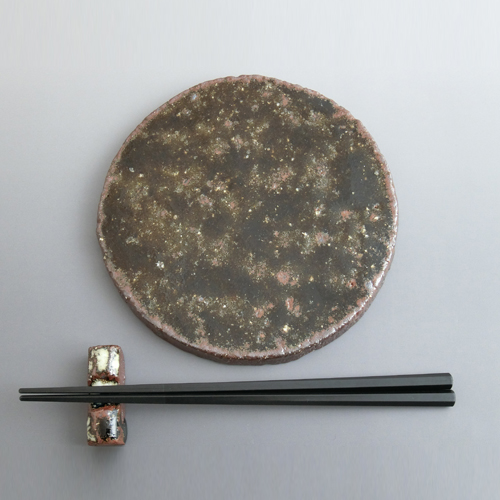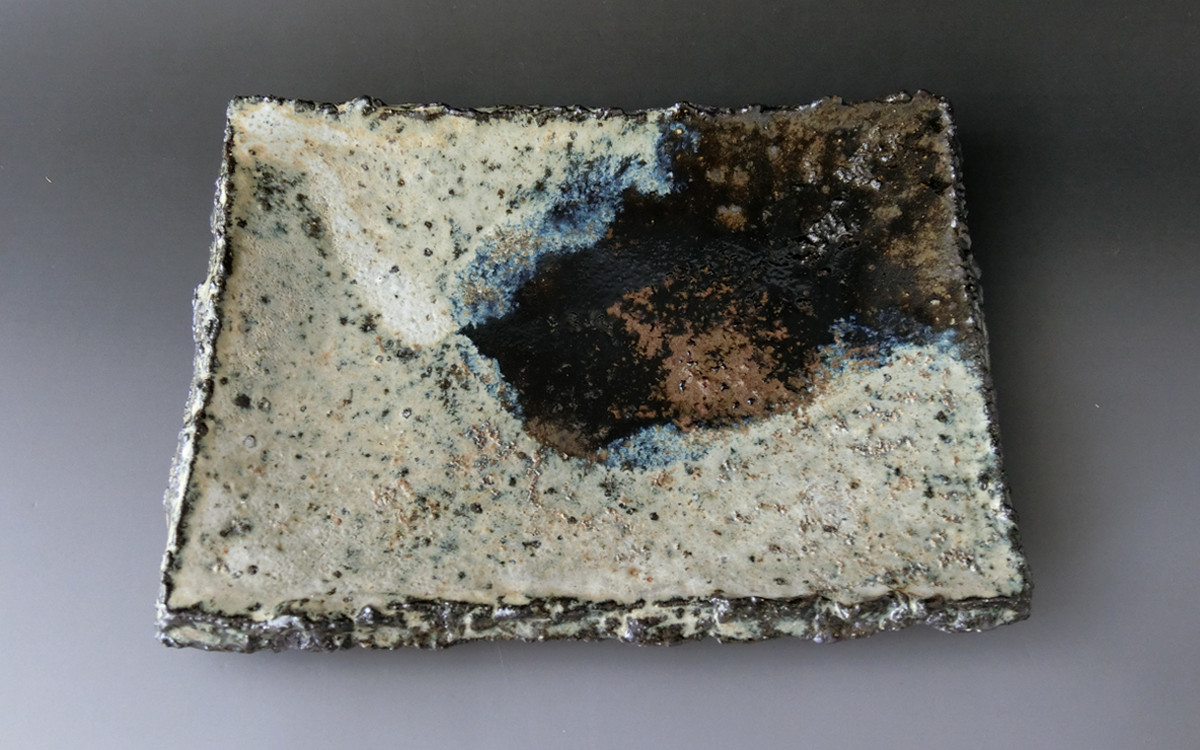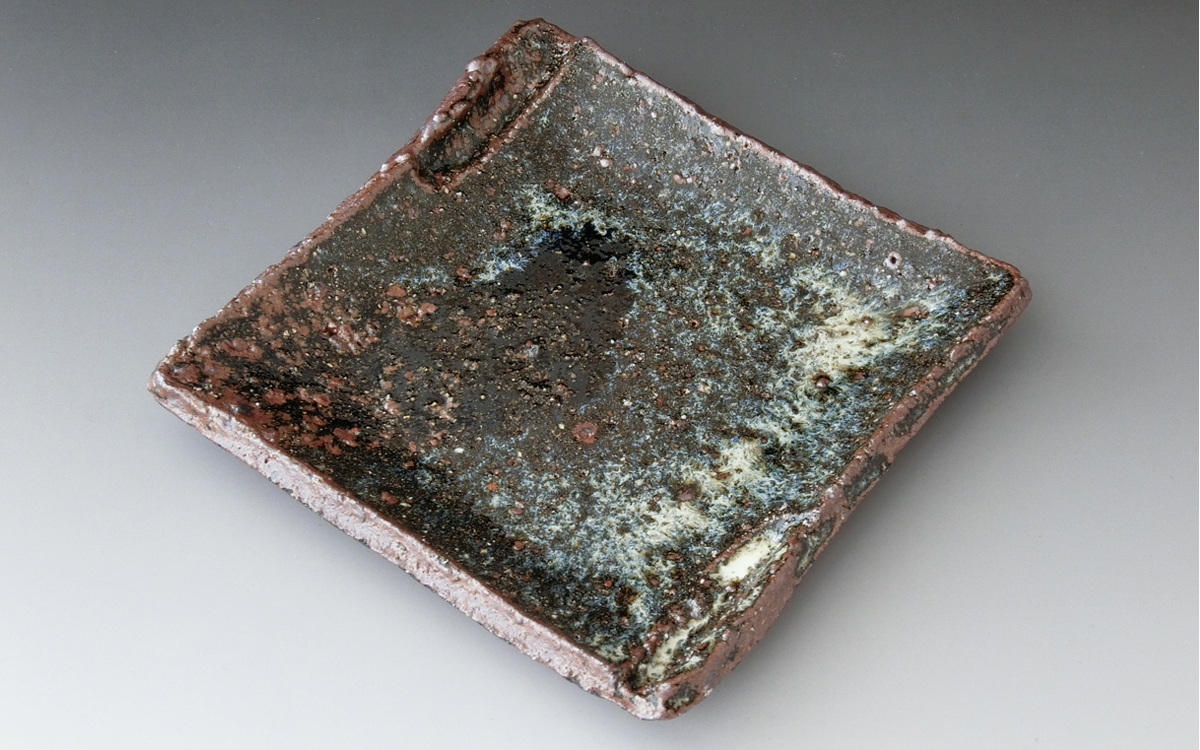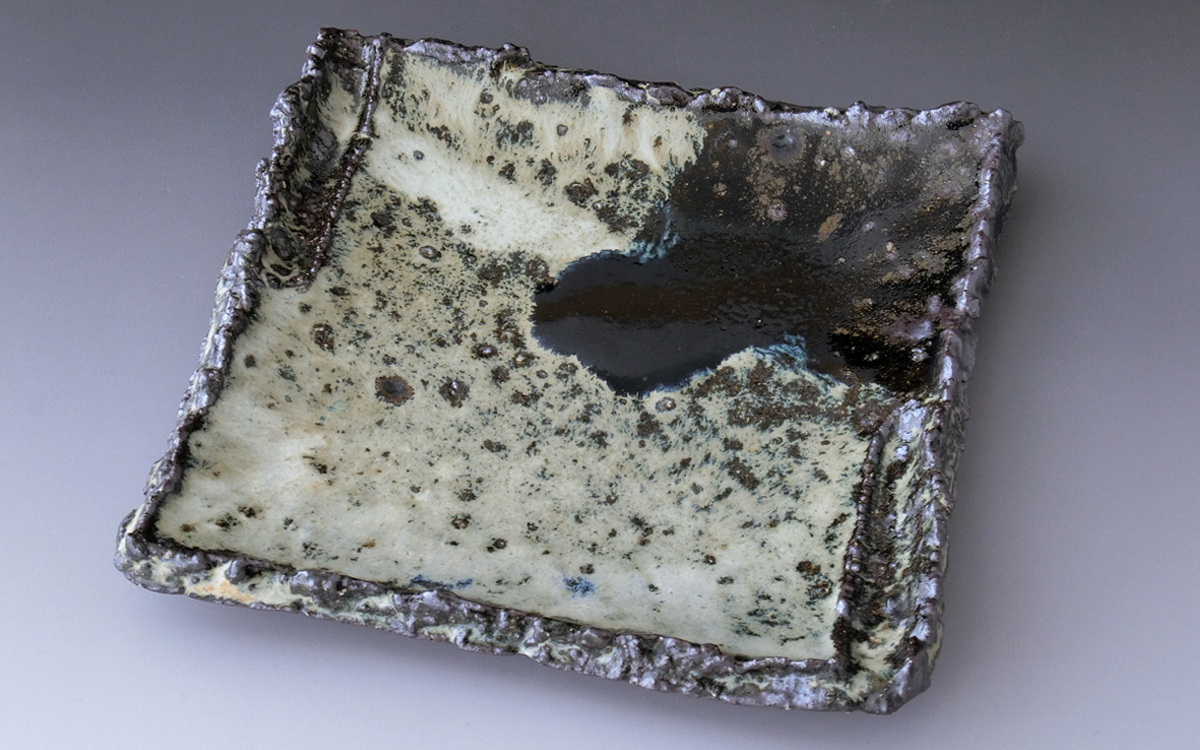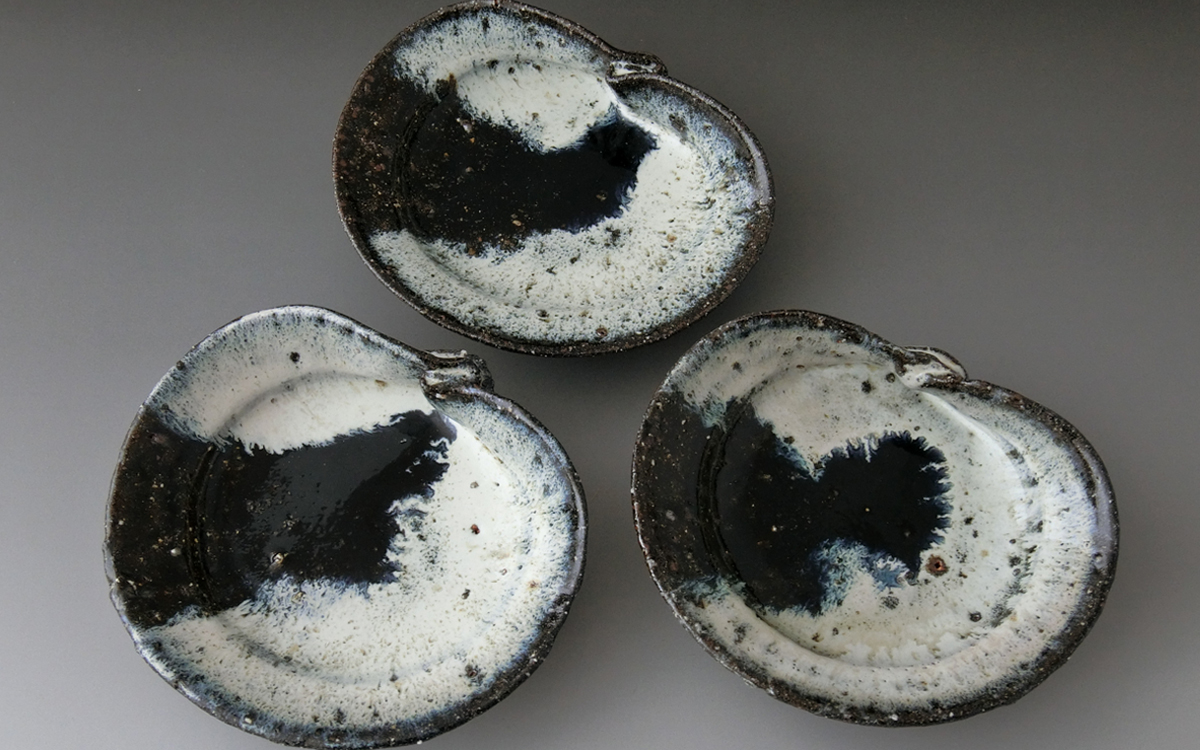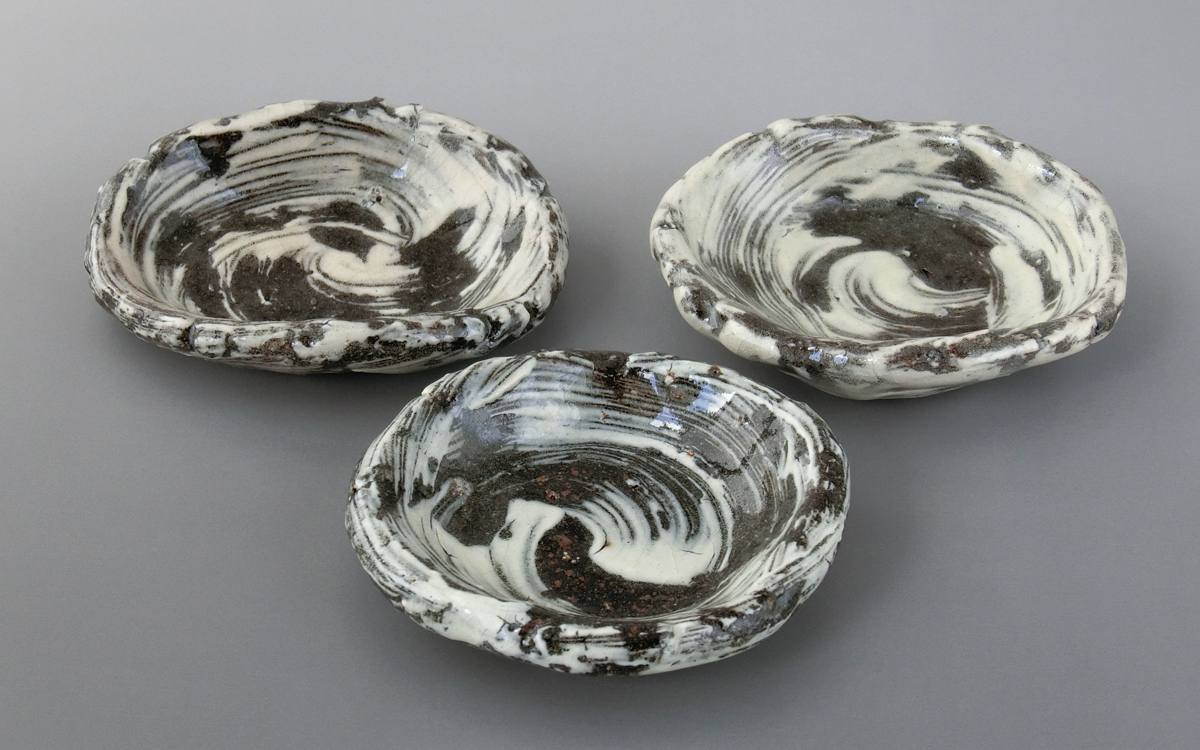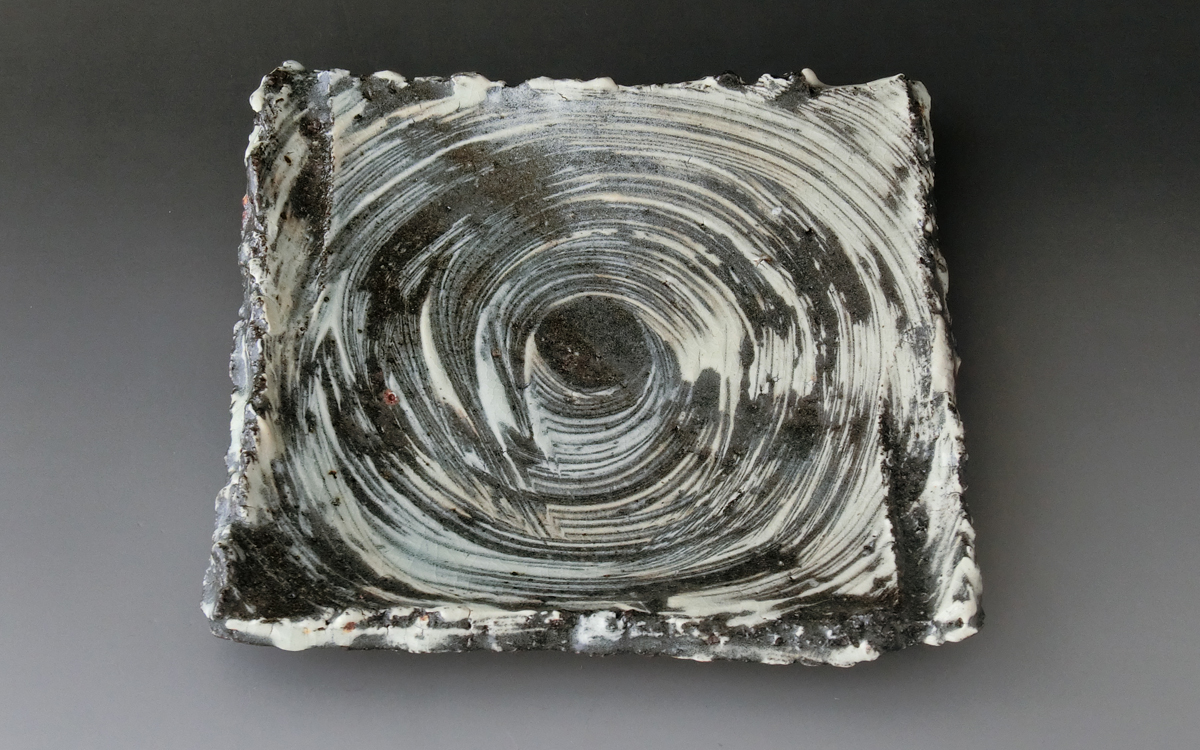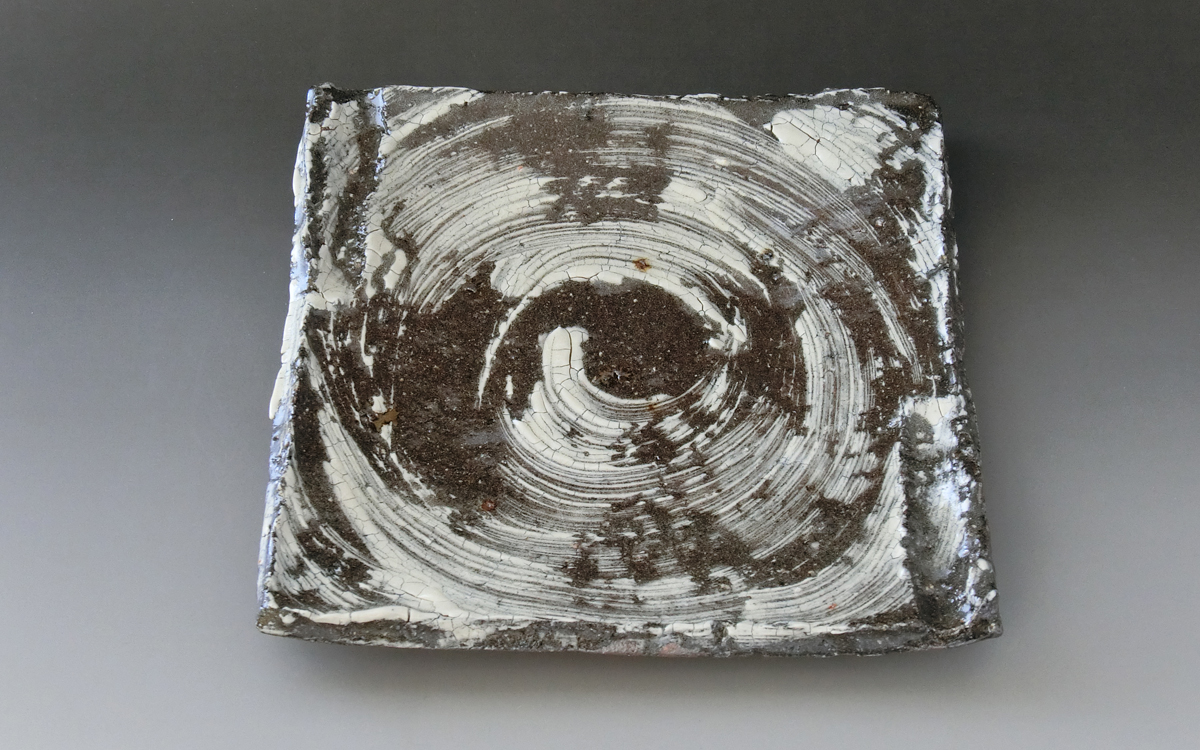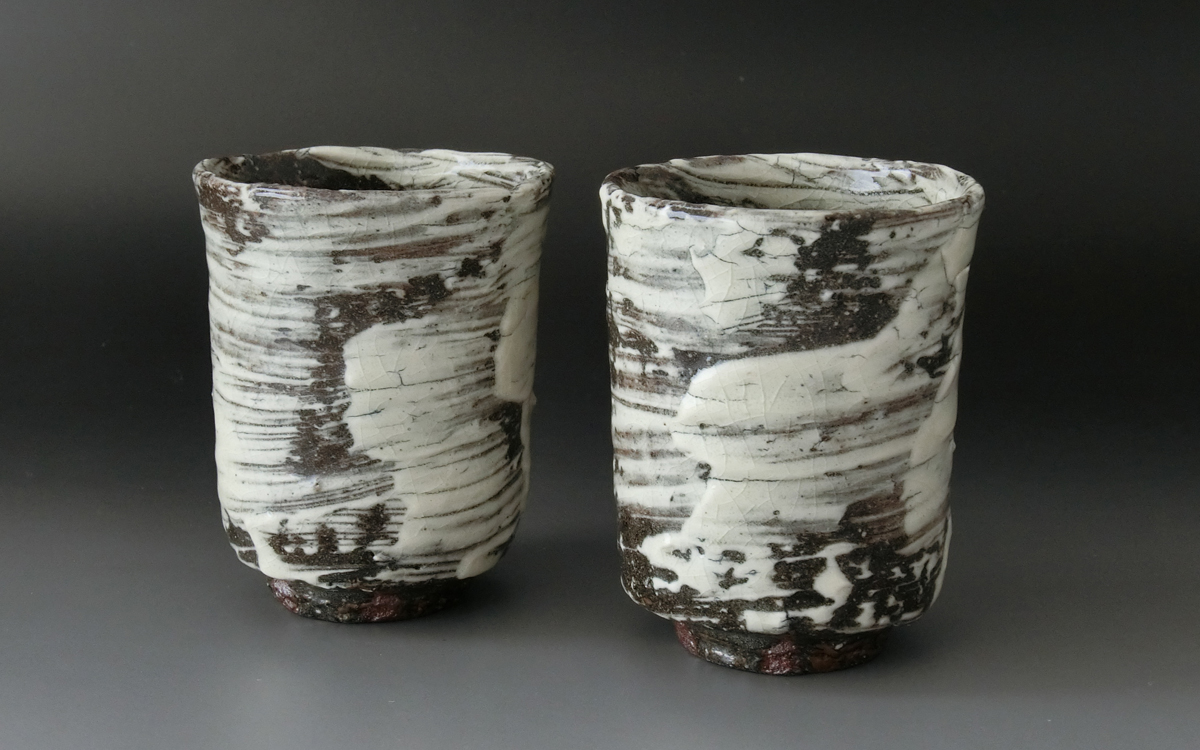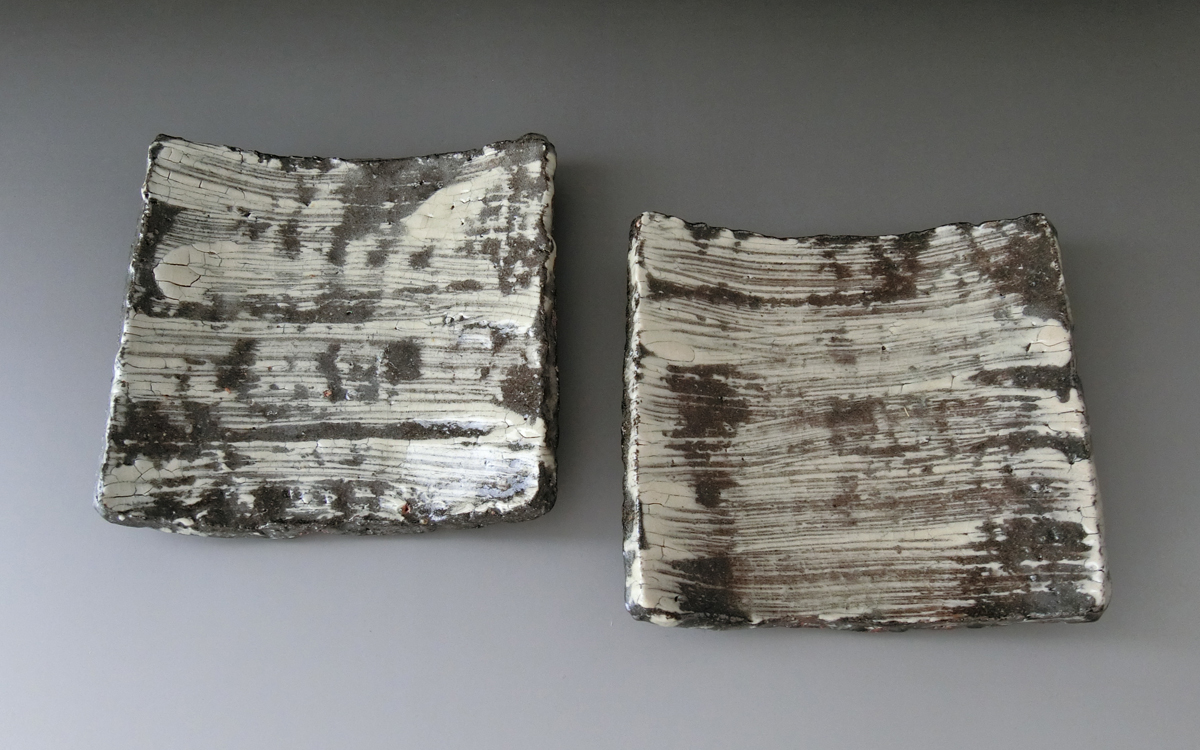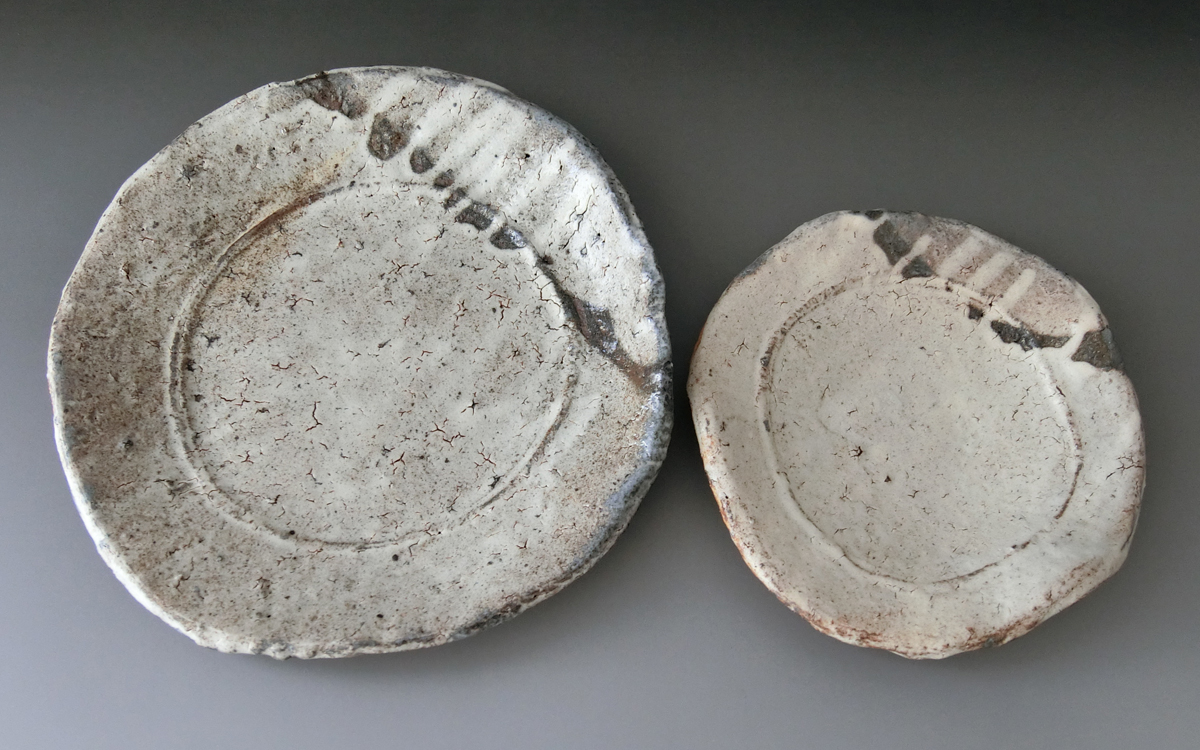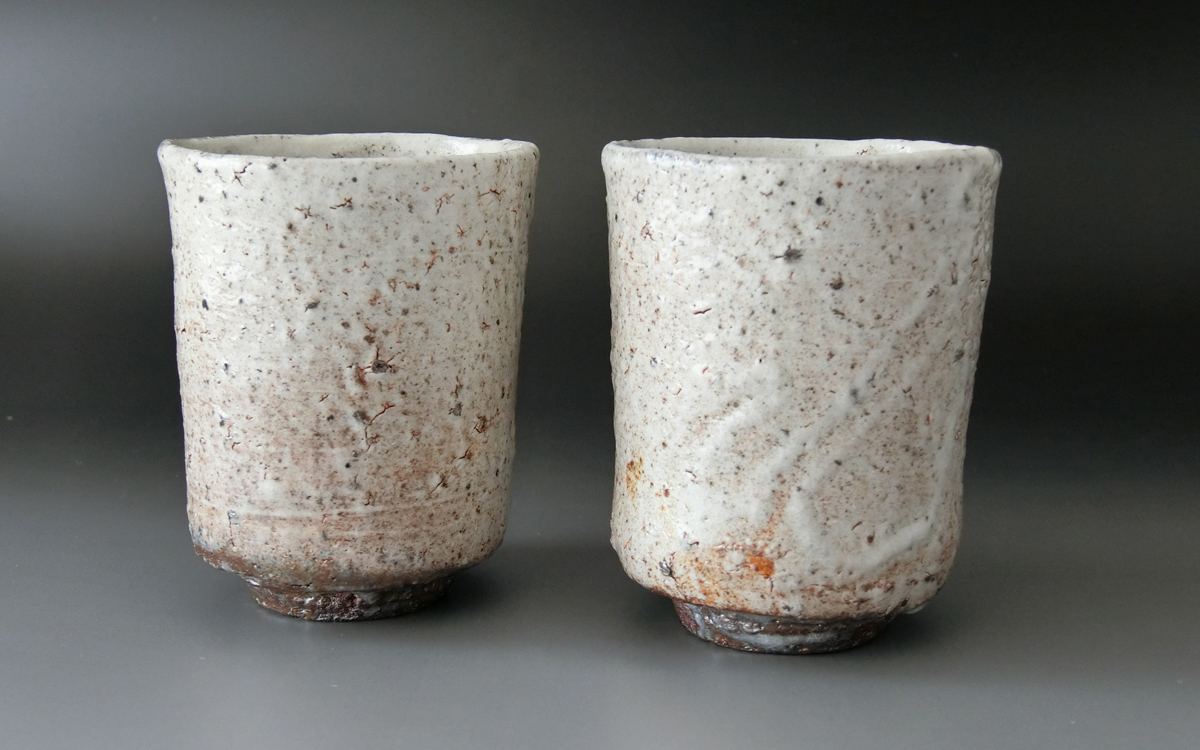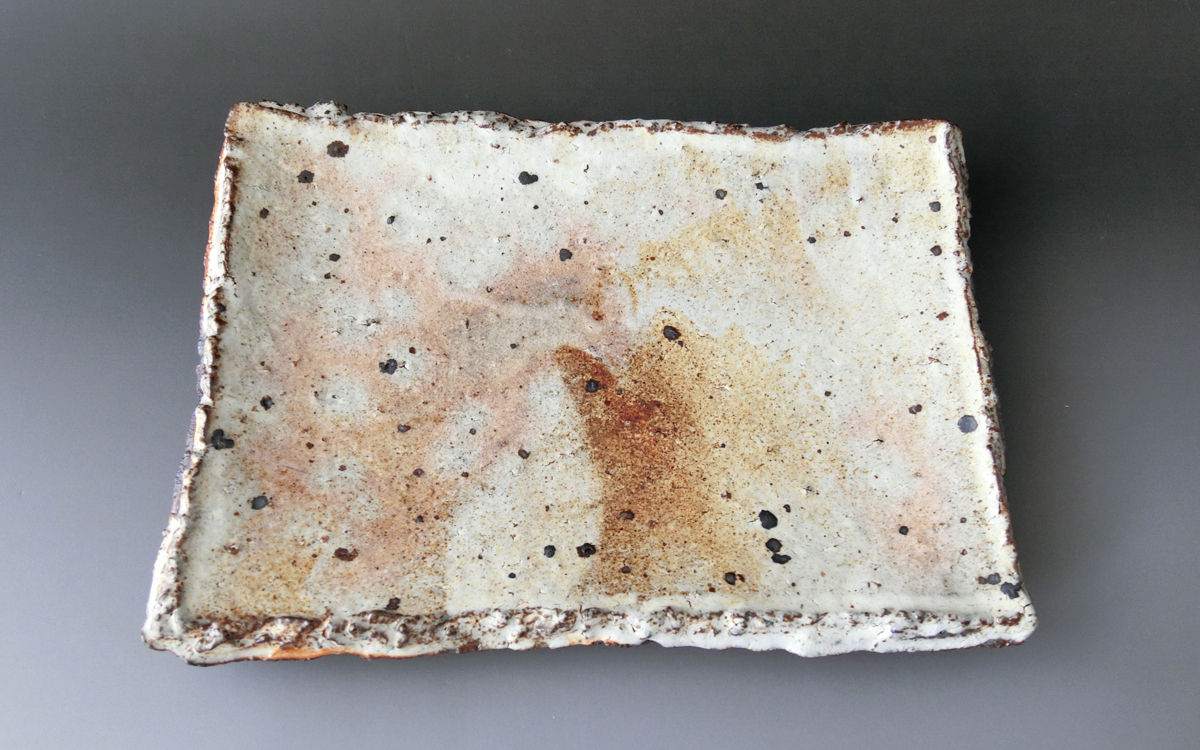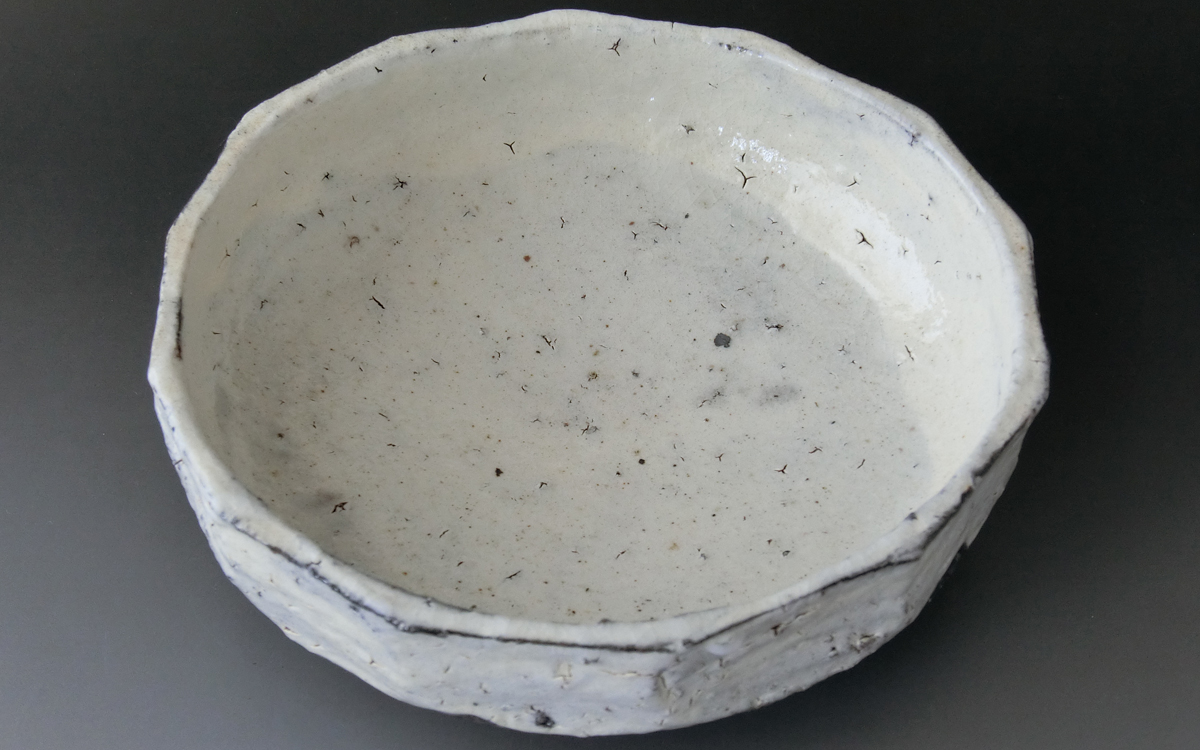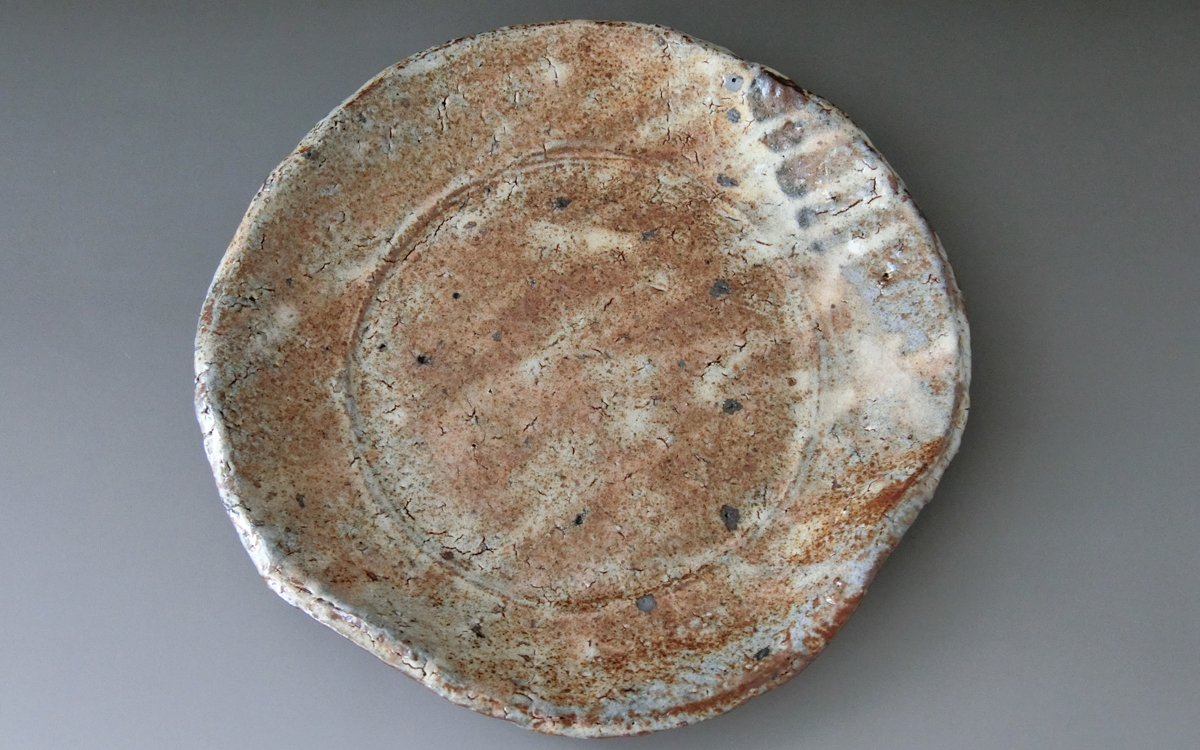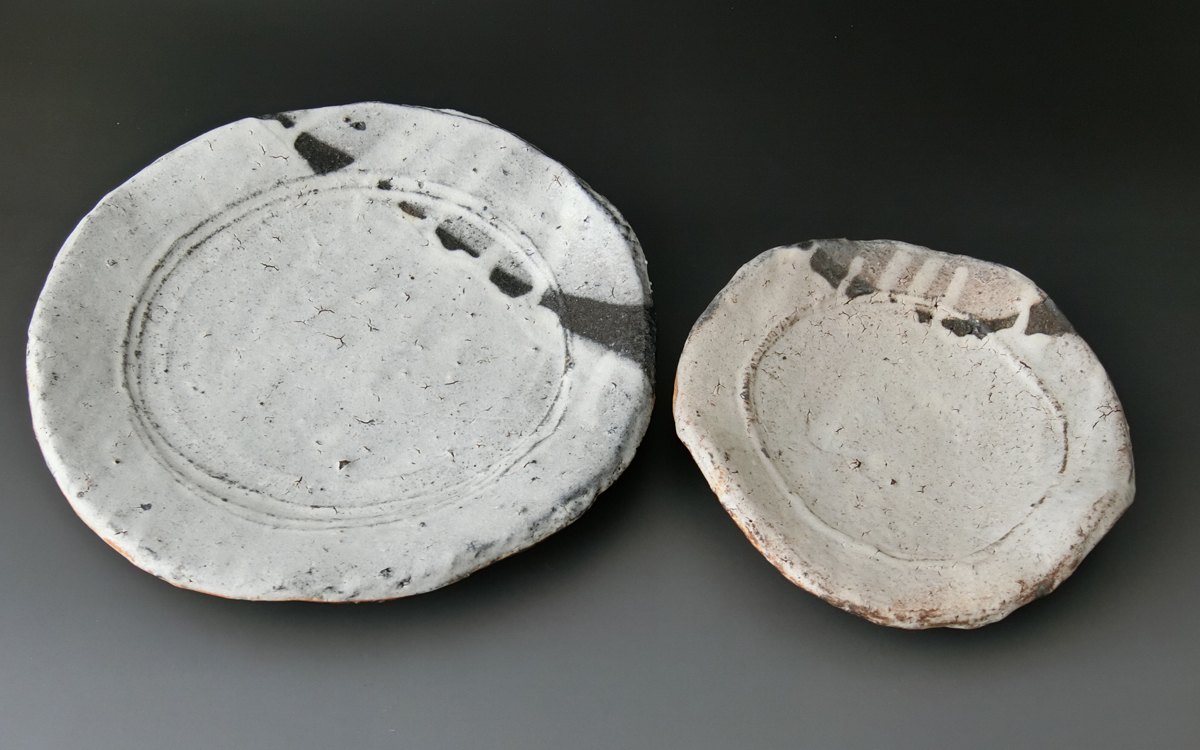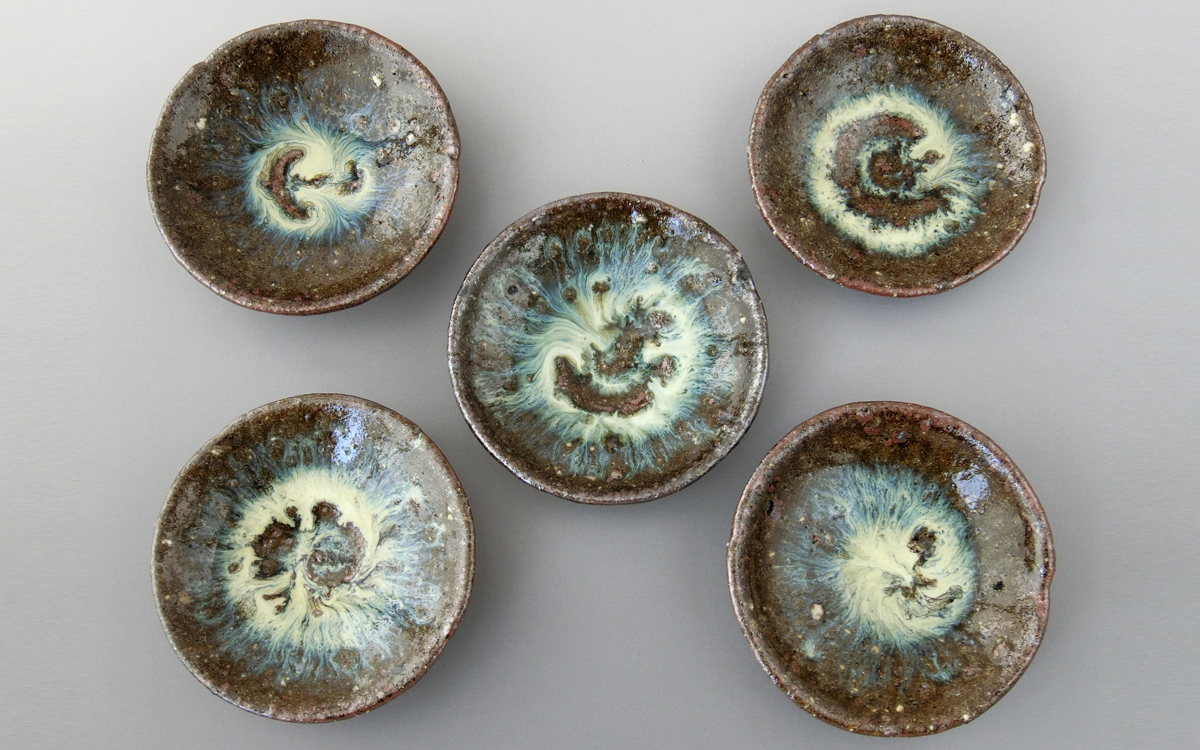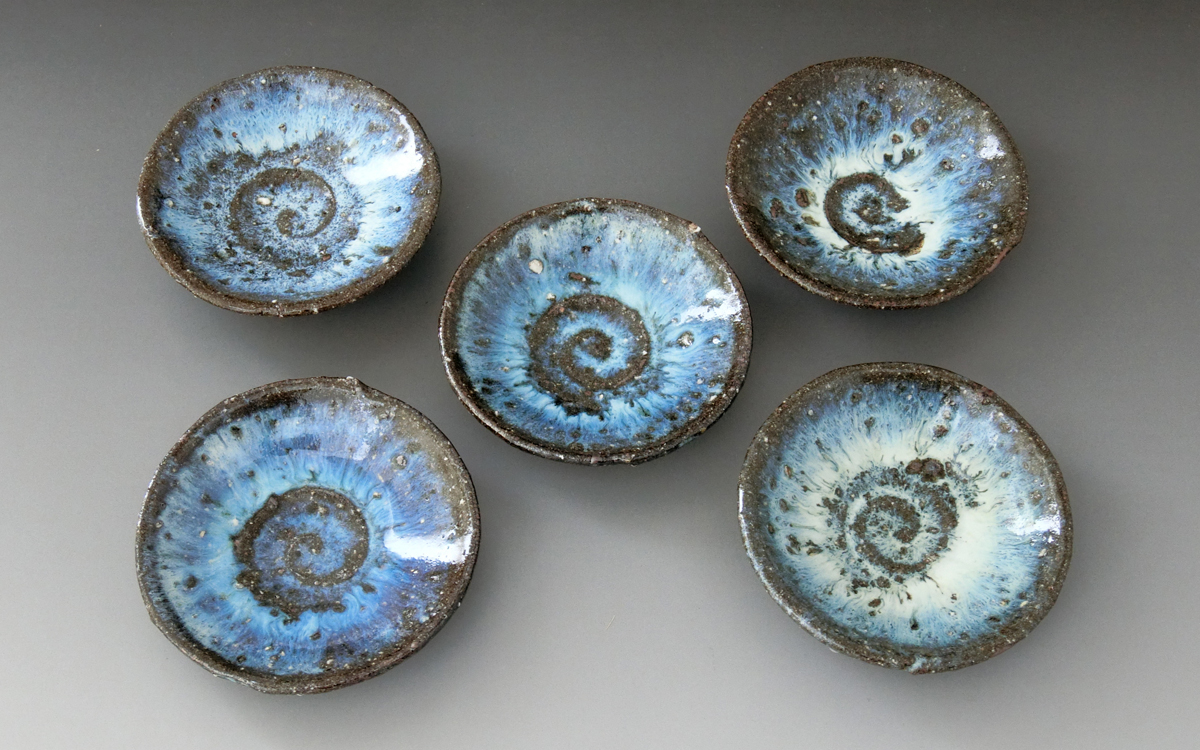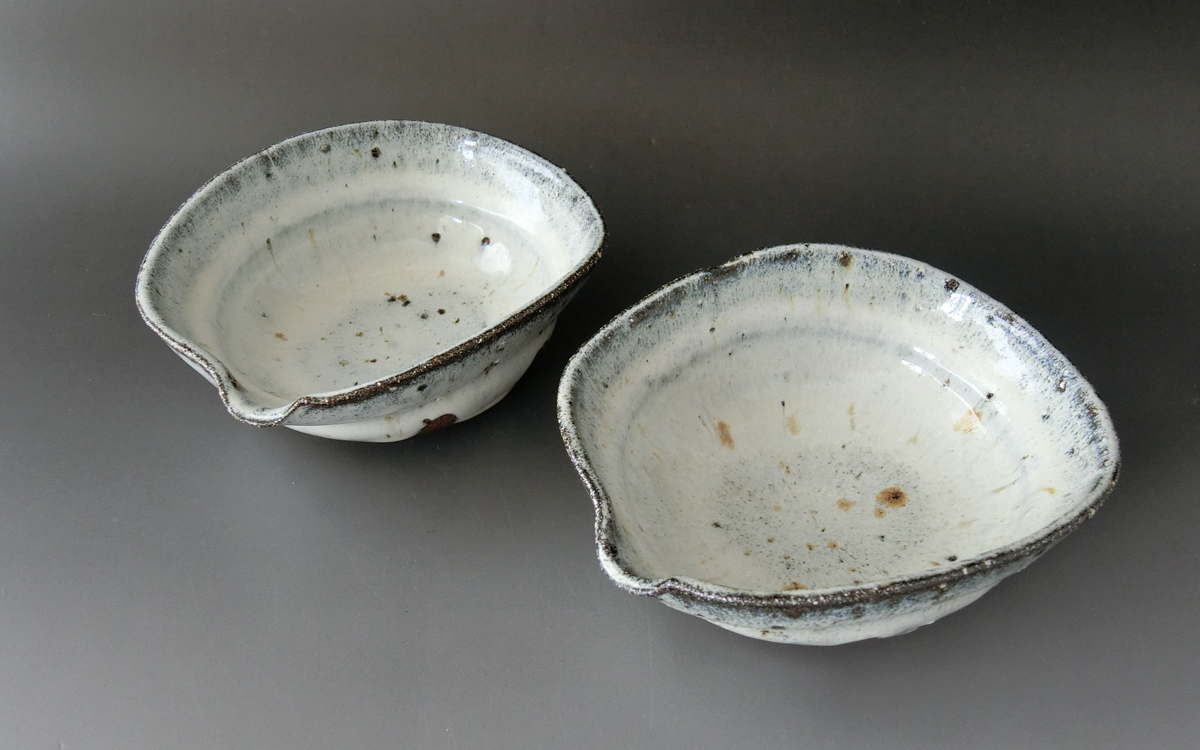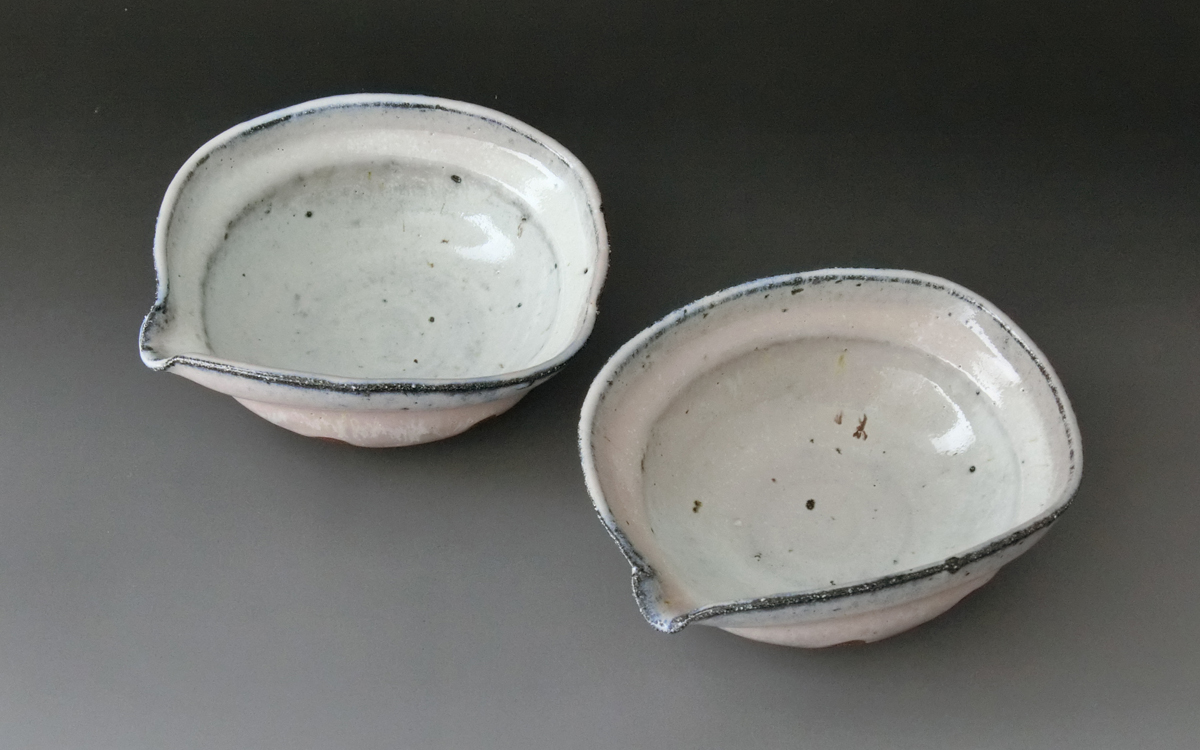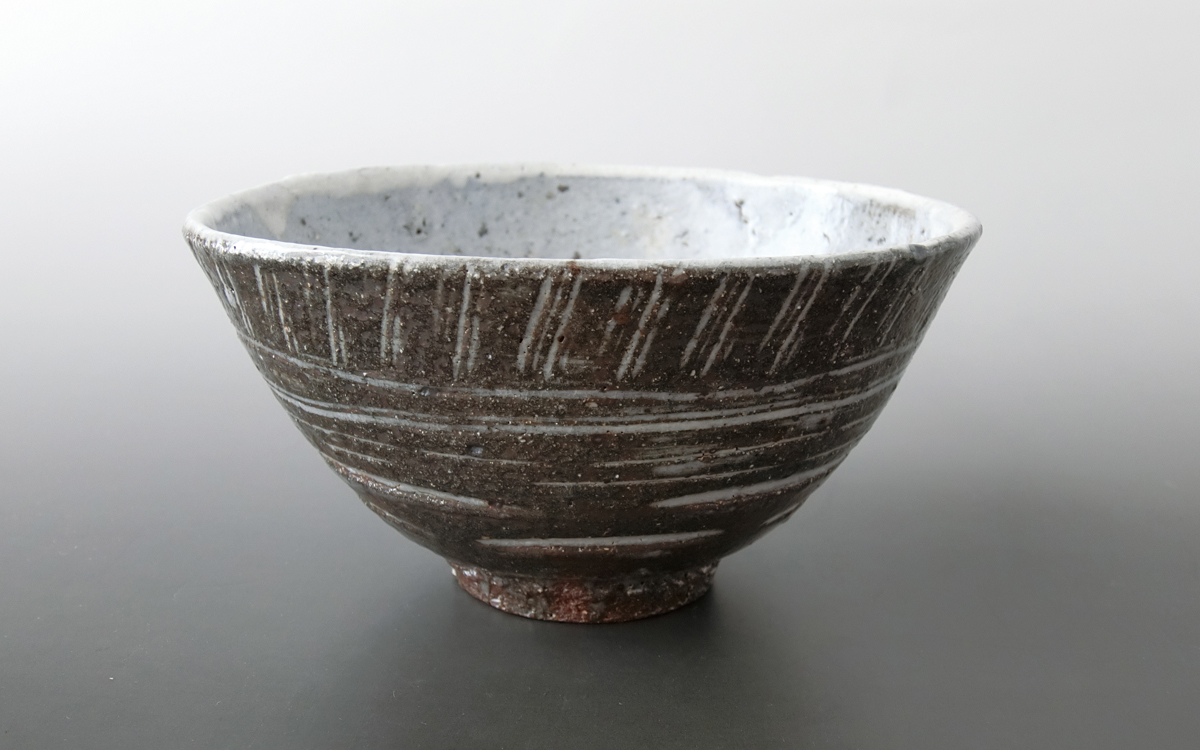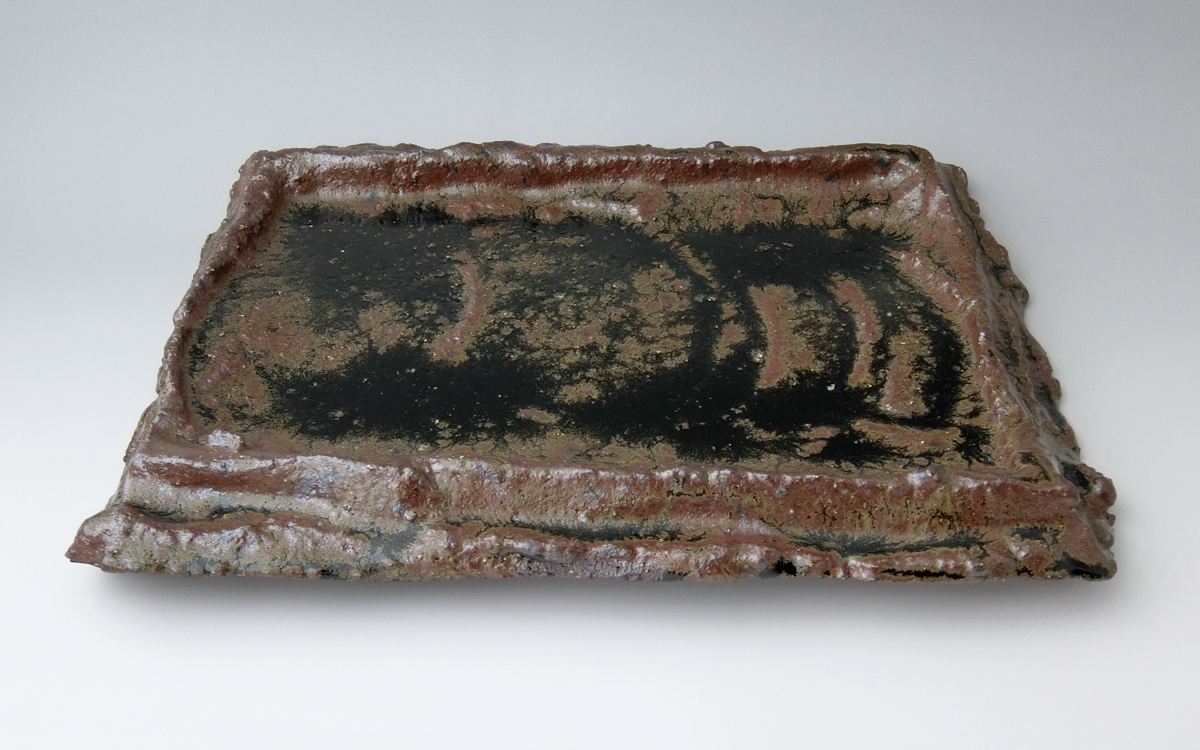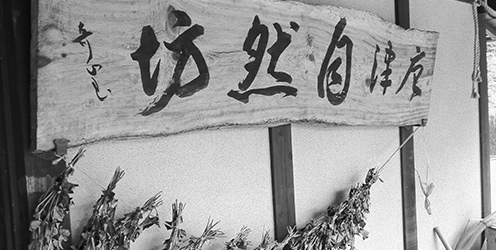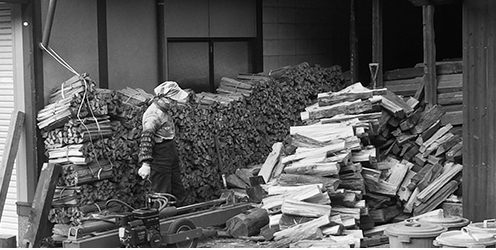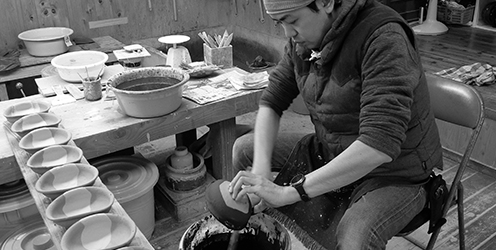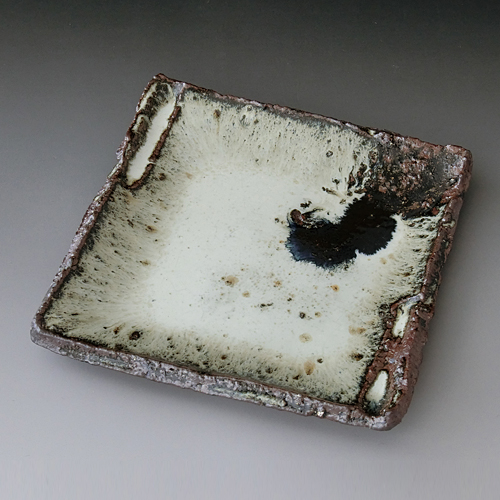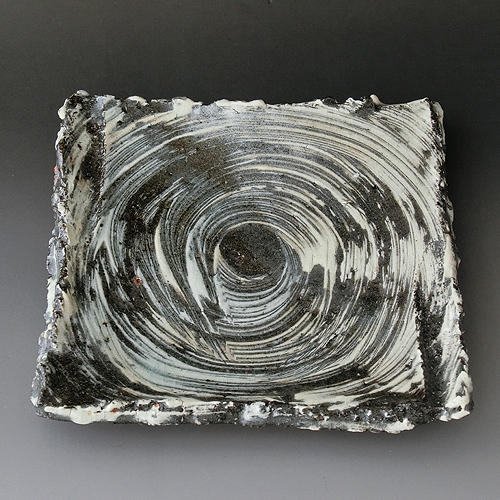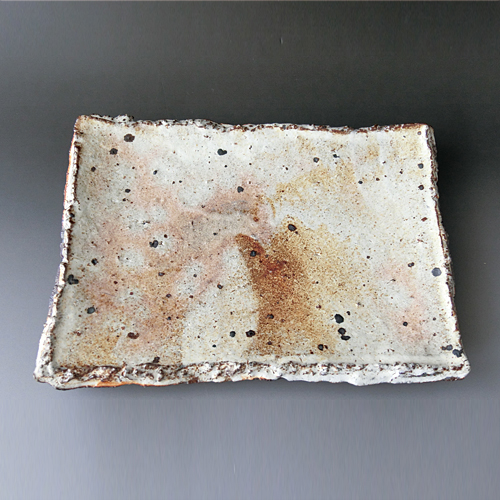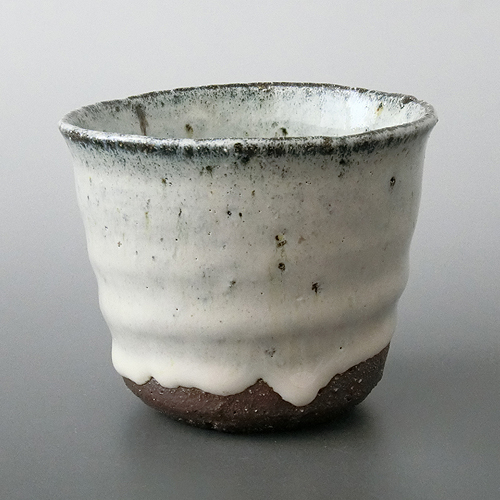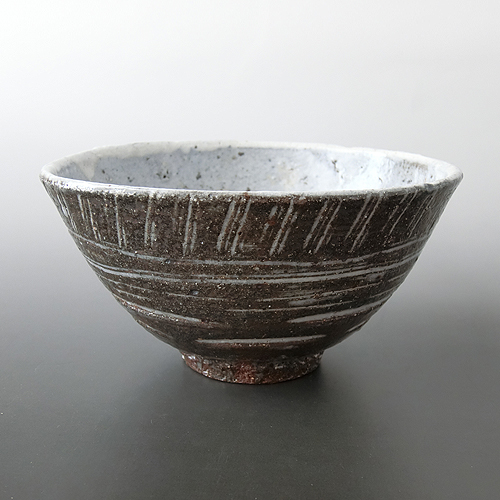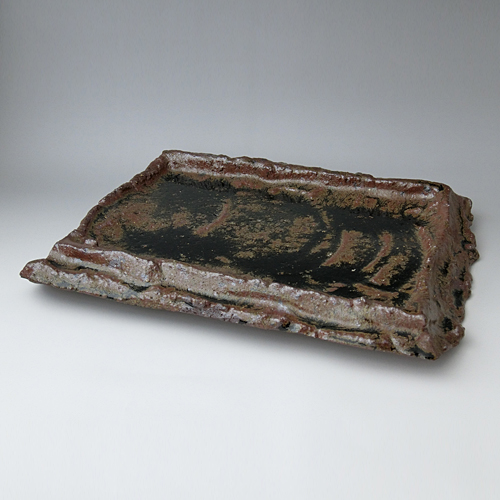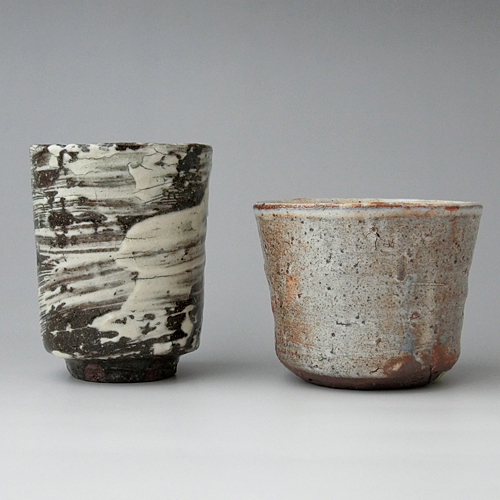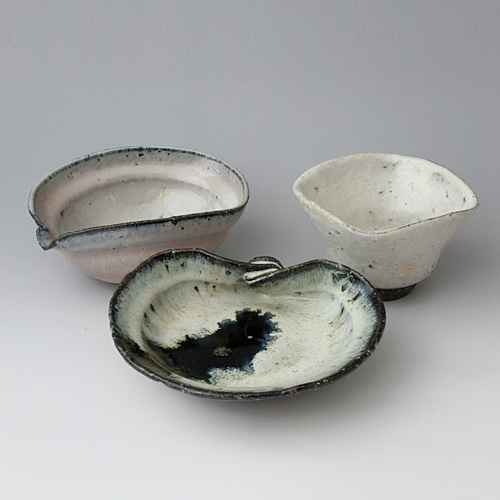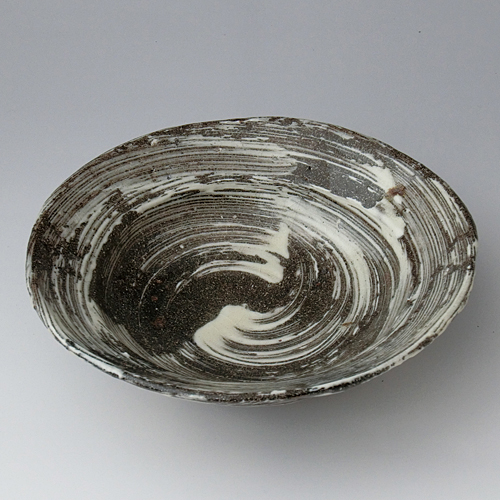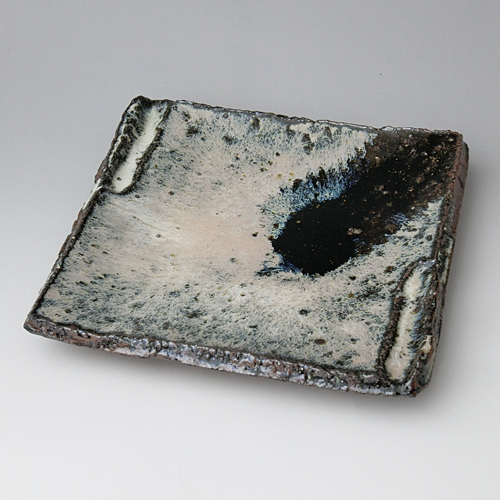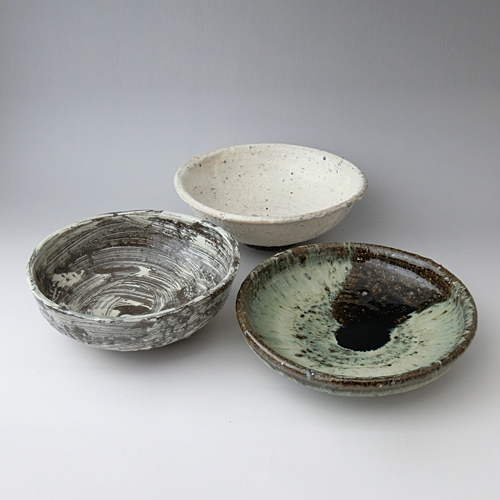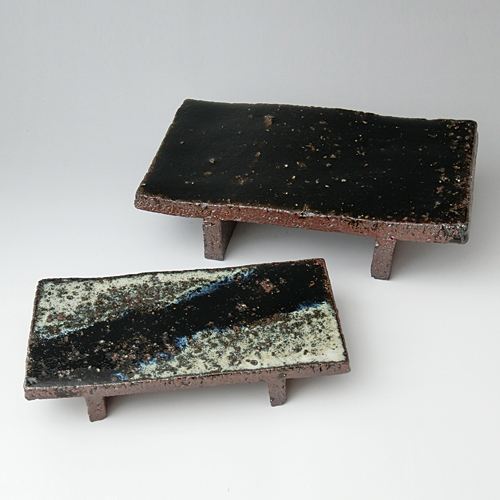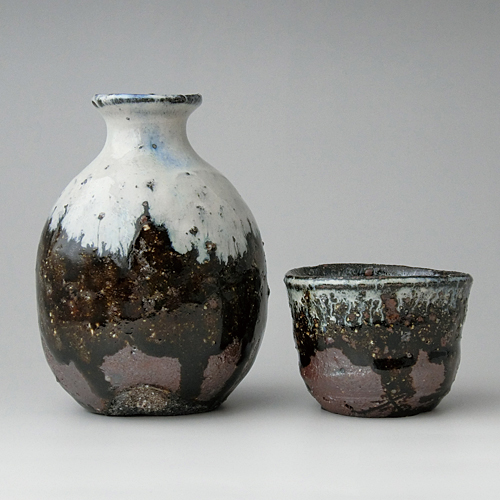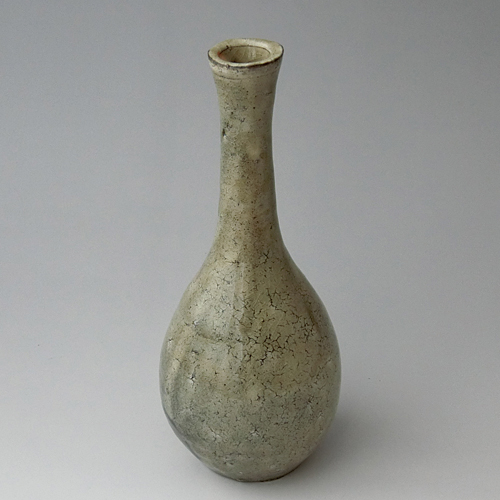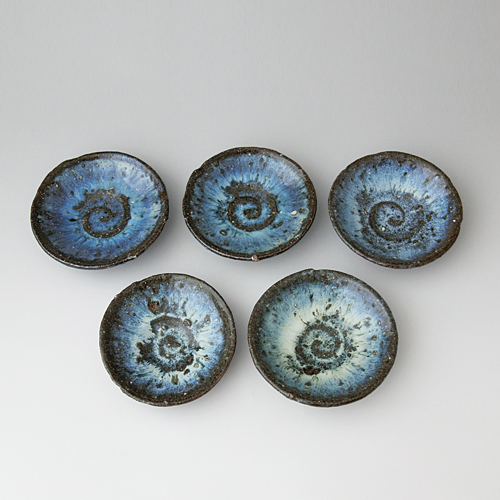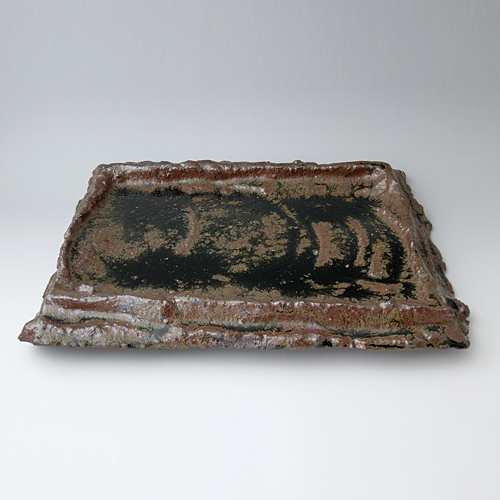Chosen Karatsu, in which the white straw ash glaze and the black iron glaze are applied separately, or in which the two glazes are mixed together, was the most striking pottery of the Old Karatsu.
Chosen Karatsu is the most eye-catching of the ancient Karatsu ware, where the skills of the potters
are fully demonstrated.
The most difficult part of making Chosen Karatsu is the firing. The melting points of the white straw ash glaze and the black iron glaze are different, so if the firing temperature is too low, the straw ash glaze will not flow, and if too high will cover the black iron glaze.
However, when the glaze application and the firing are correct, the black and white designs are wonderful, and the subtle blue, purple, and yellow colors that are created on the border between the two is also a testament to the skill of the potter.
Among the many types of Karatsu ware, Jinenbo Kiln’s Chosen Karatsu ware has intense dynamism and rich colors, and is sure to catch the eye in any situation.
The reason for this is that the coarse, iron-rich clay, which is made by the artist himself, is compatible to the glaze, enriching the color and texture, and of course the beauty of the glaze can be seen from the top of the clay.
However, because of this, individual differences occur in each piece, which is also a characteristic of Jinenbo Kiln’s Chosen Karatsu.
Please enjoy to your heart’s content the Chosen Karatsu of the Nakagawa Jinenbo Kiln, which cannot be seen anywhere else in terms of both individuality and color.





